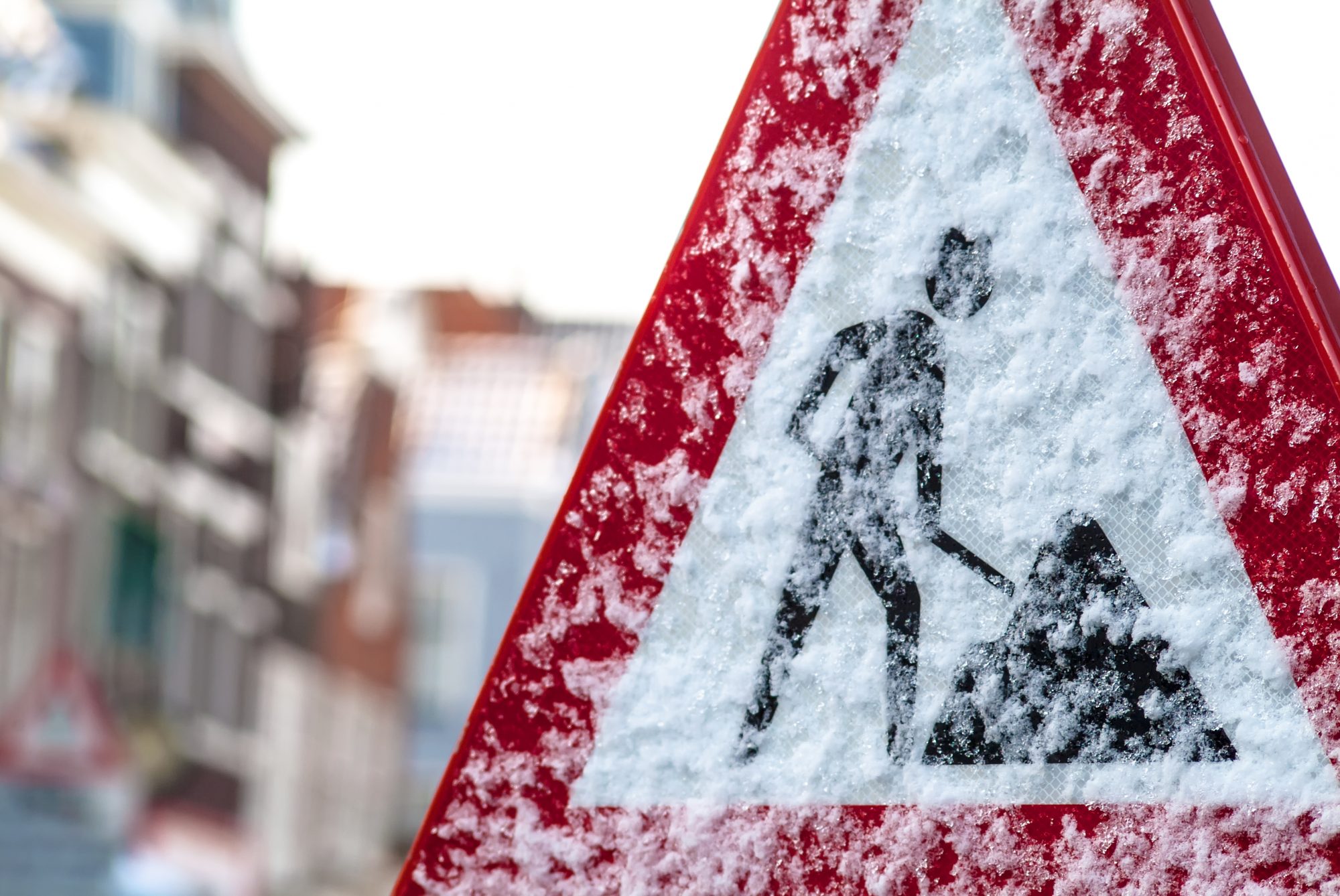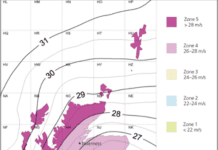The Met Office has issued cold and icy weather alerts across large parts of the country, therefore construction employers are being reminded of their responsibilities to keep their workers safe as cold weather prevails across the UK
Working in cold weather conditions can seriously impact health and safety across a construction site if risks are not mitigated properly. With temperatures plunging to a record low of -15.7C at night in some areas of the UK, employers have a duty to determine safe minimum working temperatures for employees.
What is the minimum working temperature in the UK?
Indoor workplace temperatures are covered under the 1992 Workplace Health and Safety Regulations Act, which places a legal obligation on employers to provide a reasonable temperature in the workplace.
The Approved Code of Practice suggests that the minimum temperature should be at least 16 degrees Celsius. However, if the work requires rigorous physical effort, the temperature should be at least 13 degrees Celsius.
The minimum temperature for outdoor work is harder to navigate, as there is no legal minimum requirement. However, according to the Management of Health and Safety at Work Regulations 1999, employers must make a suitable health and safety assessment.
What health risks can occur due to cold weather on construction sites?
As most of the work on construction sites requires workers to be outdoors for prolonged periods, there can be health risks to employees if suitable clothing is not worn or regular indoor breaks are not provided.
Health conditions that can arise due to cold weather include:
- Chilblains
- Frostbite
- Hypothermia
- Pneumonia
Cold weather conditions also can acerbate the risk of catching colds, and the flu as the cold and dry air weakens the body’s immune resistance. There is also a higher risk of depression in the winter months for those who suffer from seasonal affective disorder (SAD).
Alongside this, cold weather can also impact a worker’s ability to concentrate, meaning that errors of judgment are more likely to happen, which can acerbate the risk of accidents on site.
How can low temperatures affect construction delivery?
Low temperatures can also cause plant and equipment to malfunction due to cold and icy conditions, and lifting operations may be faced with unstable loads.
This may mean delivery times may be pushed back as construction sites become unsuitable and dangerous working environments, and employers are called to delay work.
Employers must take a sensible approach during cold weather
John Rowe, head of operational strategy at HSE, commented on ensuring better health and safety in cold weather: “We’re calling on all employers to take a sensible approach during the cold weather we are experiencing. There are lots of jobs that will be more difficult in the current conditions. Most employers will recognise this and make appropriate accommodations for their staff. That is the right thing to do.
“It’s also important employers ensure staff are working at a reasonable temperature. People working in uncomfortably cold environments are less likely to perform well and more likely to behave unsafely because their ability to make good decisions deteriorates.
“Complying with the code of practice is the right thing for an employer to do. By maintaining a reasonable temperature, employers are likely to maintain the morale and productivity of their staff as well as improving health and safety.”
Netex have offered updated advice on staying safe when working in cold weather:
Swelling, blotchy skin, numbness or itchy/tingling sensations could indicate frostbite or immersion foot.
Less extreme risks of working in the snow and ice could lead to dry skin caused by low humidity, which can cause cracked and even bleeding skin.
Your employers should monitor temperatures, maintain safe temperatures in offices and know when it isn’t safe to work.
- Check in on your concentration levels
Cold conditions can also affect concentration and mobility, making it more risky for manual workers and those operating machinery for work. A small lapse in concentration when operating machinery could lead to dangerous circumstances and even life-threatening situations.
- Add extra breaks throughout the day
It’s important to make sure workers aren’t in cold conditions for a long time so consider adding extra breaks to their schedules when planning shifts. Heavy lifting in cold weather without the correct safety precautions and PPE can also lead to muscle strain.
- Limit transportation outside where you can
Slips and falls are the highest cause of nonfatal workplace injury in the UK and can lead to a long list of medical issues, such as broken bones, strained muscles and sprains – so it’s important to mitigate the risk of this where possible.
In icy conditions, ensure any onsite walkways are cleared and gritted before asking employees to use them to limit the danger.
Driving in icy conditions to your place of work is also not recommended. Black ice on roads can be hard to see and incredibly dangerous, causing potentially life-threatening crashes on roads.
Consult your employer about your options for flexible working arrangements and risk assessment before you attempt to commute in severely icy conditions.
- Monitor rainfall and flood risk
Similarly to snow and ice, there isn’t legislation around working during wet weather. However, employers are expected to act responsibly and protect employee welfare.
Old and large buildings, such as offices and warehouses, are susceptible to leaks and flooding in heavy rain. Employers should ensure the use of correct signage and cordon off areas that may pose the threat of slips.
Working outside in heavy rain is also hazardous as obstructed vision can be dangerous when working with operating tools or machinery.
Rain can also pose a risk of reducing body temperature, potentially even leading to hypothermia for severe cases.
Employers should always provide PPE to protect against the rain or alternatively have spare dry clothing or uniforms available for employees who may have to work in heavy rainfalls to ensure they maintain a healthy body temperature at work.
- Conduct regular risk assessments
Employers have a duty of care to ensure the wellbeing of their staff. To ensure there is a safe working environment, regular risk assessment and measures to protect employee safety should be well communicated.
Other measures to protect employees include providing dry clothing and appropriate PPE, allowing extra breaks and offering flexible working arrangements to support and avoid health concerns.














